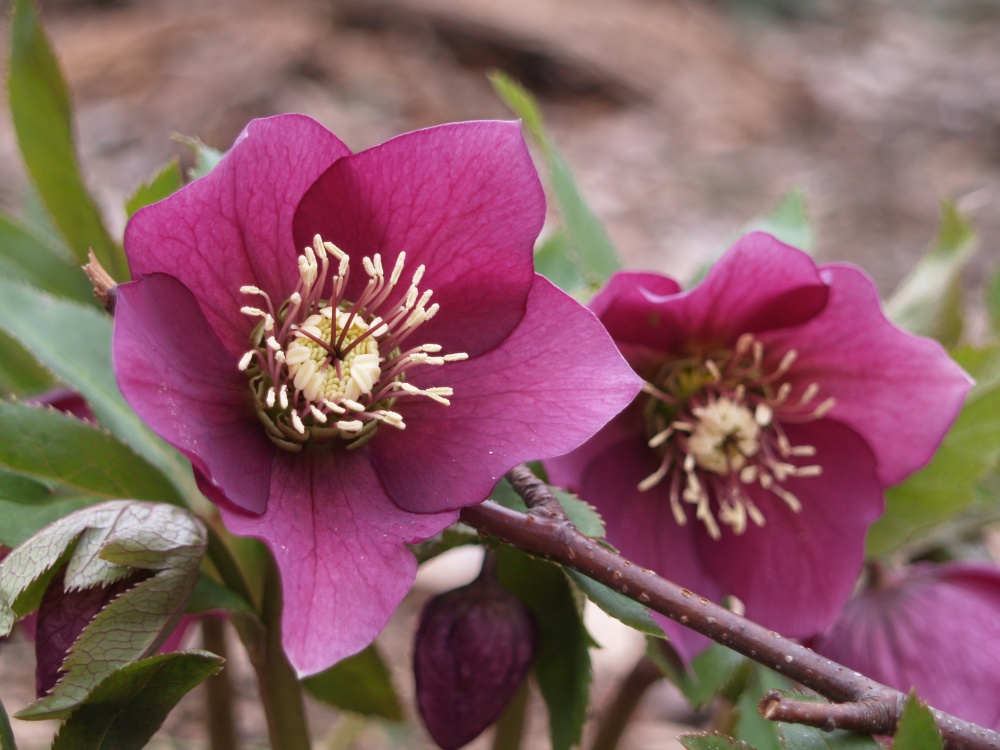 Finally, finally, finally. So often I’ve said finally in recent weeks, the word is practically worn out. Finally, the hellebores (Helleborus spp., above) are flowering, only four weeks later than typical. And finally, flowering of both Star magnolia (Magnolia stellata ‘Royal Star’) and ‘Okame’ cherry (Prunus x incamp ‘Okame’, below) seems imminent after a considerable delay. Finally, this gets us to where we should have been a month ago.
Finally, finally, finally. So often I’ve said finally in recent weeks, the word is practically worn out. Finally, the hellebores (Helleborus spp., above) are flowering, only four weeks later than typical. And finally, flowering of both Star magnolia (Magnolia stellata ‘Royal Star’) and ‘Okame’ cherry (Prunus x incamp ‘Okame’, below) seems imminent after a considerable delay. Finally, this gets us to where we should have been a month ago.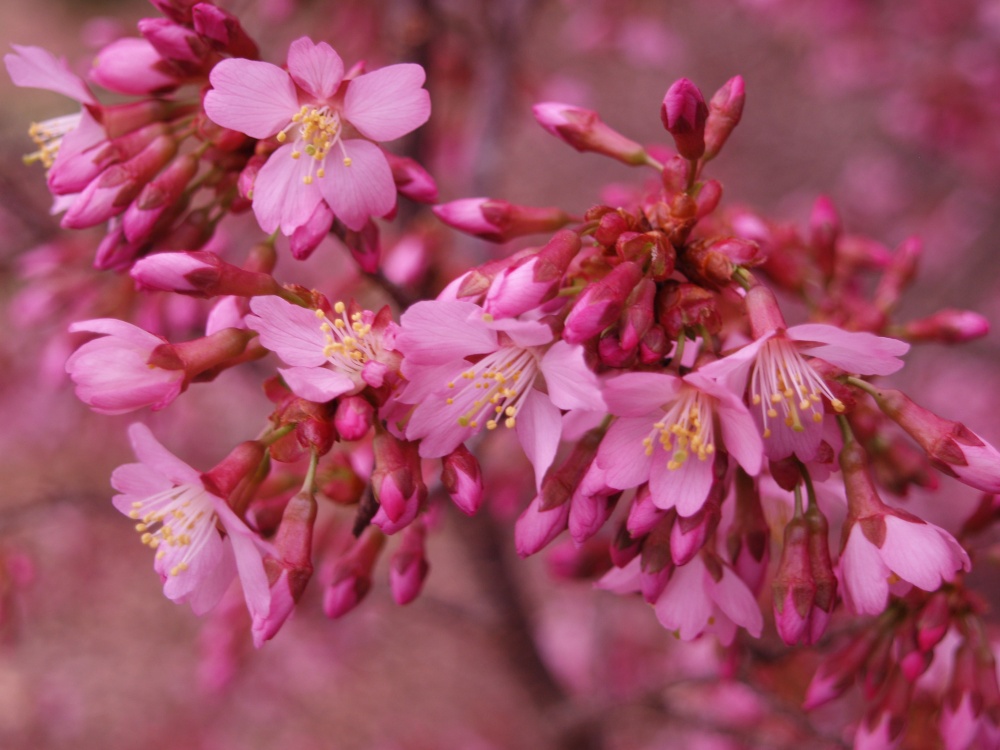
‘Royal Star'(below) and ‘Dr. Merrill’ magnolias (Magnolia × loebneri ‘Merrill’) typically flower in early March, and occasionally in late February when the distinctive flowers are regularly threatened by cold temperatures. Many gardeners avoid these early bloomers altogether because of the potential for damage, and instead opt for later flowering magnolias that bloom after the threat of regular freezes and frost. Now, the magnolias will flower when there’s still the chance for freeze and frost, but much milder versions that should pose no problem for the blooms.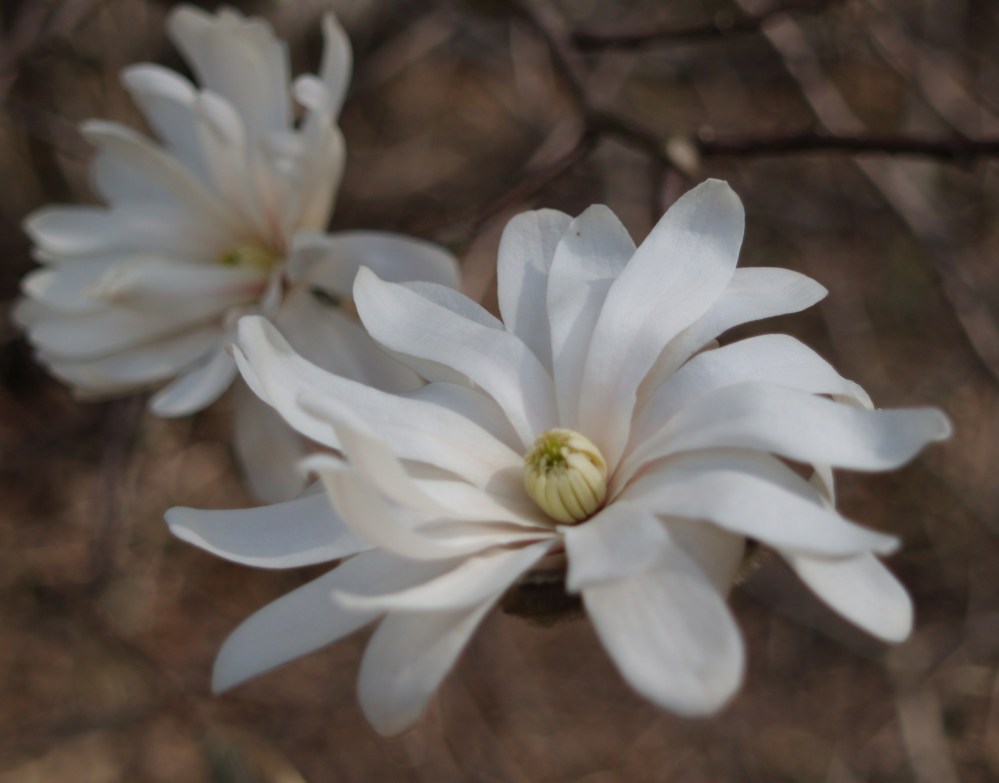
I value the later spring flowering hybrid magnolias ‘Elizabeth’ (Magnolia ‘Elizabeth’) and ‘Jane’ (Magnolia ‘Jane’), but treasure the earlier flowering types. Rarely do the flowers escape unscathed by cold March nights, but while this is disappointing it seems that most often the blooms are around for a few days to enjoy prior to being turned to mush by the cold. Now, the flowers are unlikely to be damaged, but when so much else is flowering the blooms are not nearly so thrilling.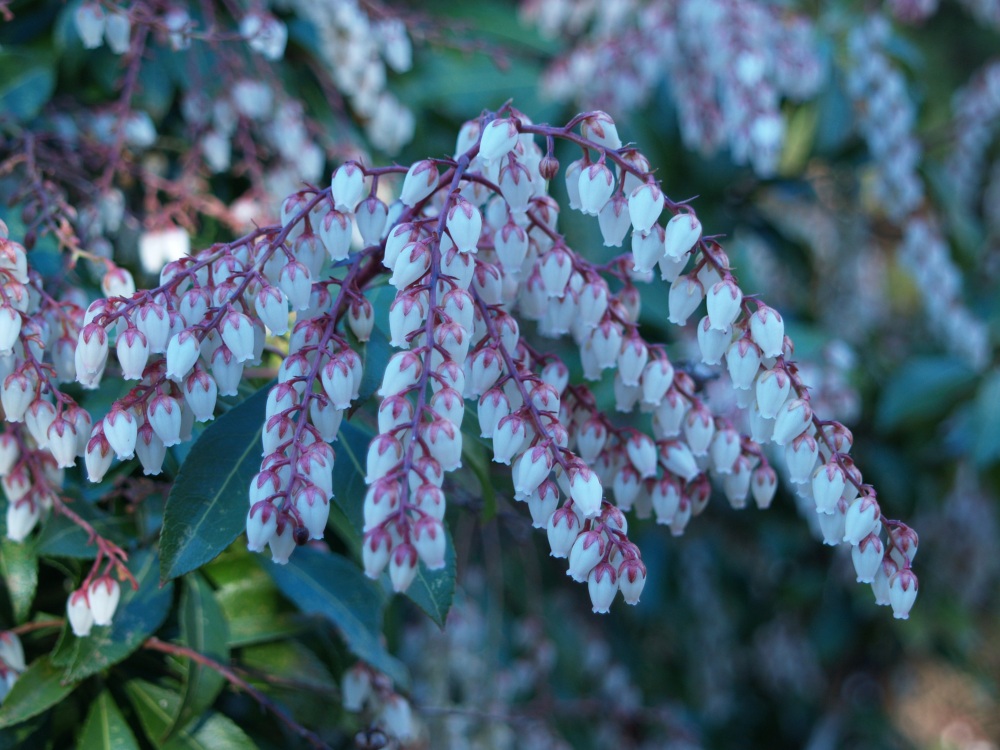
The varieties of Pieris are flowering, and again the clear choice in the garden is ‘Dorothy Wycoff’ (Pieris japonica ‘Dorothy Wycoff” above). It’s dark foliage and red flower buds stand out through the winter, but the abundance of blooms, tolerance of clay soil, and resistance to lacebugs extends its value. ‘Scarlet O’Hara’ and the dwarf ‘Cavatine’ also have a history in this garden, so both earn high marks. I’m intrigued by two relatively new varieties that I’ve planted in the past year. The variegated leaf ‘Little Heath’ (Pieris japonica ‘Little Heath’ below) is not exactly a dwarf, but it is smaller growing than others. It appears to be a slightly scaled down version of ‘Flaming Silver’, and if it proves to have greater lacebug resistance it will be a treasure.
While the new growth on many pieris varieties is flushed with red or pink, none are as distinctive as the wine-red foliage on ‘Katsura’ (Pieris japonica ‘Katsura’, below). It is too early to pass judgment, but there seems no reason to ever consider planting the troubled ‘Mountain Fire’ pieris that has been most popular for years, but is plagued by moist soils and lacebugs so that it rarely performs acceptably.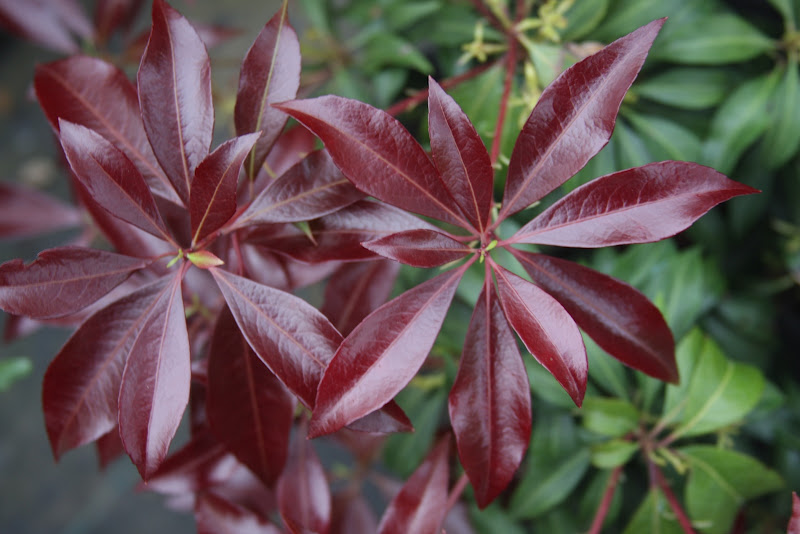
yes, most everything is blooming 3-4weeks later than normal, even here in Fl.! The orchids here were 2 MONTHS behind schedule…typically they’re a welcome February sight when little else is open….now they’re just one of many and have lost some of their impact because of it!
Yes, even up here in New Hampshire, everything is late in coming out.
I have to comment on your remarks about the Mountain Fire andromedas. I have no problem with lacebugs on them, nor do I suffer from wet ground. Years ago my wife bought me a Mountain Fire. I so loved the bright red new foliage that I bought two more of the shrubs! It’s truly one of my garden favorites, and I often pause when cutting the grass to admire it.
In the clay soil of the mid Atlantic Mt. Fire can be a problem. In any case, if you like Mt. Fire you should try Katsura.
I live in Montgomery County, Maryland and recently bought a Pieris japonica ‘Katsura’. The tag said it should be planted in full to part sun, so I just planted it in a southeastern exposure where it gets full sun until the early/mid afternoon. After a couple people told me that pieris do better in the shade, I decided to look for more information about how much sun ‘Katsura’ should have and came across this post. How did your ‘Katsura’ perform for you this summer? How much sun does it get? Do you think mine would do better if I moved it to a shadier northeastern exposure where it just got a few hours of morning sun? Thank you for your help!
Also, your photos are beautiful!
Surprisingly, ‘Katsura’ has not run all the other Pieris varieties with colored new growth completely out of business. In addition to dark colored new growth that shames others, two in my garden grow as vigorously as ‘Dorothy Wycoff’ and ‘Scarlet O’Hara’, the toughest ones that I’ve come across. Many pieris varieties are highly susceptible to root problems in poorly drained clay soils, with the popular ‘Mountain Fire’ fading (I think) when it sees a storm on the horizon.
The ideal situation for pieris is in dry soil amended with Pine bark fines with a half day of sun, but preferably the first half so it escapes that hottest afternoon sun through the summer. In too much sun it will often lack vigor unless the moisture is perfect, and in too much shade the foliage will not color as well. Also, in sun many pieris varieties tend to be plagued by lacebugs, While this is less of a problem in more shade. ‘Katsura’ does not seem as susceptible to lacebug from my short experience. The more I see ‘Katsura’, the more there is to like.
Thank you very much for the information! I’m glad that ‘Katsura’ is doing so well for you. When you say that sun in the first half of the day is better, does that mean before noon? Thanks again!
Many plants that prefer part shade/ part sun only need a break from the late afternoon sun when the day is hottest and the intensity of the sun is the greatest. So, the ideal situation is sun for most of the day, but shade from 3-6pm in July and August.
Thanks so much for your help!